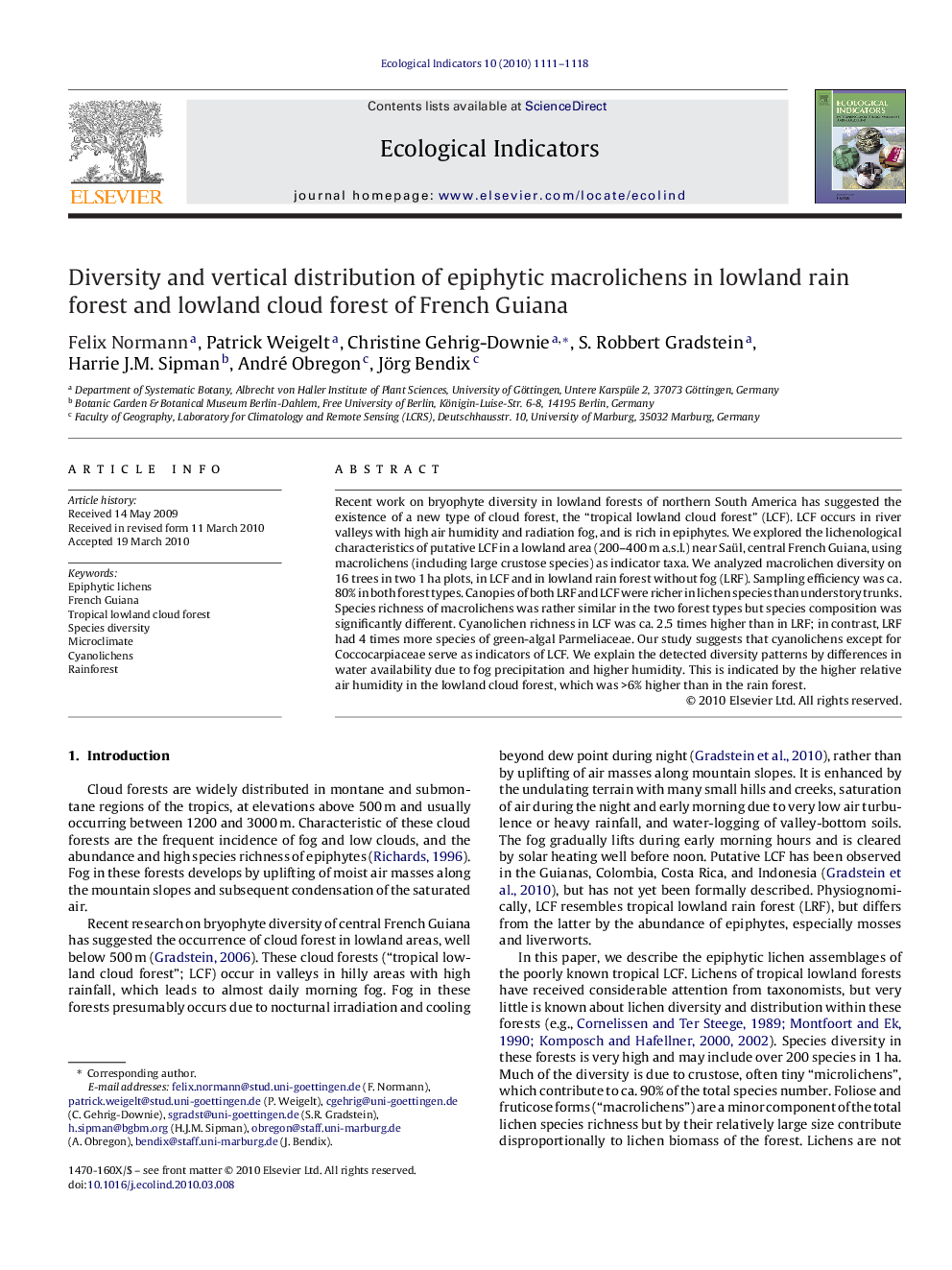| Article ID | Journal | Published Year | Pages | File Type |
|---|---|---|---|---|
| 4373855 | Ecological Indicators | 2010 | 8 Pages |
Abstract
Recent work on bryophyte diversity in lowland forests of northern South America has suggested the existence of a new type of cloud forest, the “tropical lowland cloud forest” (LCF). LCF occurs in river valleys with high air humidity and radiation fog, and is rich in epiphytes. We explored the lichenological characteristics of putative LCF in a lowland area (200-400Â m a.s.l.) near Saül, central French Guiana, using macrolichens (including large crustose species) as indicator taxa. We analyzed macrolichen diversity on 16 trees in two 1Â ha plots, in LCF and in lowland rain forest without fog (LRF). Sampling efficiency was ca. 80% in both forest types. Canopies of both LRF and LCF were richer in lichen species than understory trunks. Species richness of macrolichens was rather similar in the two forest types but species composition was significantly different. Cyanolichen richness in LCF was ca. 2.5 times higher than in LRF; in contrast, LRF had 4 times more species of green-algal Parmeliaceae. Our study suggests that cyanolichens except for Coccocarpiaceae serve as indicators of LCF. We explain the detected diversity patterns by differences in water availability due to fog precipitation and higher humidity. This is indicated by the higher relative air humidity in the lowland cloud forest, which was >6% higher than in the rain forest.
Related Topics
Life Sciences
Agricultural and Biological Sciences
Ecology, Evolution, Behavior and Systematics
Authors
Felix Normann, Patrick Weigelt, Christine Gehrig-Downie, S. Robbert Gradstein, Harrie J.M. Sipman, André Obregon, Jörg Bendix,
